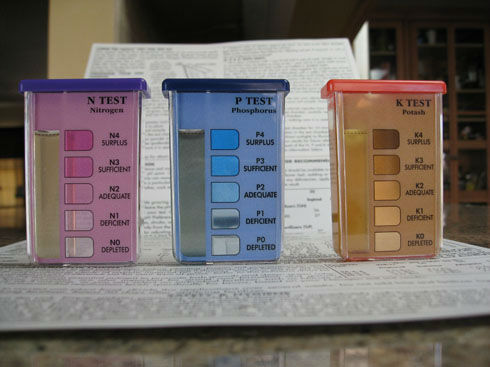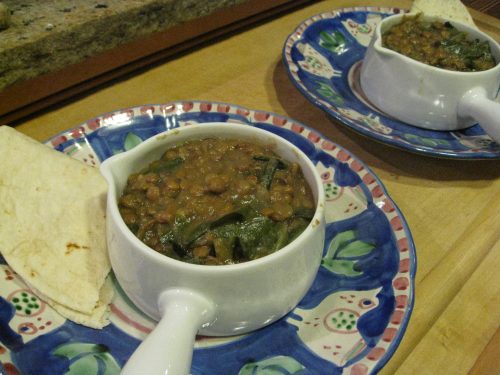We don’t get this kind of question very often, so we thought we’d feature it this week:
“Hey there, I was wondering if you know any good homemade recipes of organic fertilizers used for vegetative and flowering growth? If you could also help me out with the dosage situation too… Thanks, this would be extremely helpful! –Paul”

Paul, there are so many options to choose from when it comes to fertilizer ingredients. It can be complicated, because too much of one element can throw your whole garden out of balance. So usually I recommend off-the-shelf balanced organic vegetable fertilizers from trusted companies like E.B. Stone, Fox Farm, Dr. Earth and the like. But even these fertilizers are questionable if you are particular about source materials and true organics. Here’s why:
What’s in fertilizers?
The word “organic” is regulated differently when it comes to soil amendments and fertilizers than it is when it comes to organic food. Yes, organic means no synthetic or petroleum derived ingredients. It means you should be able to identify and recognize the ingredients on the label: bone meal, blood meal, feather meal, alfalfa meal, etc. What organic doesn’t mean, in the case of fertilizers, is that those ingredients come from organically raised sources. Most fertilizers come from the animal processing industry and there is no guarantee that the blood meal or bone meal came from chickens or cows raised organically. In fact, that is most likely not the case across the board.
The same is true of vegan fertilizer mixes, which use primarily alfalfa and soy meal. These are two of the most common genetically engineered crops in the United States, and there is no regulation excluding genetically engineered biomass and byproducts from organic fertilizers as of this writing. Hopefully that is coming soon.
Now let’s look at other ingredients in fertilizers like phosphorus and potassium. Potassium is usually provided in the form of sulfate of potash, and phosphorus in the form of rock phosphate — all mined from mountain tops. You can look for alternatives like bat guano (there is controversy over harvesting practices disturbing bat habitat, though) and sea bird guano for phosphorus, and kelp for potassium. It all depends on how you feel about mining natural resources for gardening.

So, what do we do?
Here at Gardenerd we started experimenting with seabird guano, kelp and epsom salts (for magnesium, which helps with calcium uptake). We’re not ready to report on that just yet, but we liked what we saw when we use it. Mainly, we try not to use fertilizers at all, and stick with three ingredients: Compost, Compost Tea (which uses microbially active compost, kelp and a leonardite-derived humic acid as food for microbes) and Worm castings to feed our soils. We also use cover crops. We haven’t needed fertilizer since.
But if you really want to use fertilizer…
Now, if that’s not a sufficient answer, we can point to this classic Mother Earth News magazine article about the “best home made fertilizer recipe.” The article mentions adding lime and gypsum as a pH adjuster, but before you add that, make sure you need it. We usually avoid pH adjusters altogether and let soil microbes regulate that for us (bacteria and fungi do that job very well if we let them).
As for application rates, it depends on what your soil needs. Do a soil test prior to amending. Simple NPK soil test kits are available at some nurseries and online. The instructions come with recommended amounts, but they are usually based on chemical fertilizer levels. Knowing what your soil needs before amending is like driving with your eyes open. It’s a really good idea.
This may not be the simple or straight forward answer you wanted, but I hope it helps clarify fertilizers in general. You’ll be able to make a more informed decision now that you know.





Pingback: Ask Gardenerd: Tomato Blossoms Not Fruiting - Gardenerd
Hi, Christy –
Could you please explain what cover crops are best in raised beds – when to plant them,
how long to let them grow before turning them under the soil, and then how long to let them decompose before planting?
I’m wondering if I might need to replenish my beds that way…
thanks so much!
Michele
Sure thing, Michele.
When to plant: Best planted in fall to overwinter if you aren’t growing cool-weather crops in October. You can grow a cover crop in spring too, but you lose that space for the spring.
How long to grow: let cover crops grow until about one-third of the flowers open. Then cut them down, leaving the roots in the soil.
To turn or not to turn: We prefer that you leave roots intact and layer your chopped up cover crop green on top of the bed. Then cover the entire bed with a 1″ layer of compost and water well.
How long before planting: Wait at least 3 weeks before planting and water it regularly to encourage decomposition. You can plant directly into the compost atop the decomposing material. The longer you wait, the better, but 3 weeks is minimum.
I hope this helps.